Balthazar Book Project
, 2013-2014
Participation in interdisciplinary research project Balthazar by David Weber-Krebs, direction, and Maximilian Haas, dramaturgy/theory,
resulting in an artist book: photography, drawing and sound
For information on first episode of Balthazar see http://davidweberkrebs.org/work/balthazar-1-stories-2
Work in progress

rehearsal of Balthazar-2. a choreography by David Weber-Krebs and Maximilian Haas with Tabea Magyar and Renen Itzhaki at Kampnagel Theatre, Hamburg, May 2013 DE / performances: 6th, 7th and 8th of June, see News
Balthazar is a longterm artistic research project by David Weber-Krebs (director) and Maximilian Haas (dramaturgy/theory) that explores our cultural relationship with animals using the means of theater. The performances show an encounter of one animal and a group of human performers on a stage. A donkey – Balthazar – is the protagonist, the centre of the action.
The project consists of a series of three performance productions and a book. Referring to the traditional division of the performing arts between theater, dance, and opera, each performance concentrates on a specific theatrical means: narration, choreography, and sound. And each of them has a different conceptual focus derived from the works of the three philosophers that shaped the contemporary reflection on the animal most prominently: Gilles Deleuze, Donna Haraway and Jacques Derrida. Visual artist Ines Lechleitner keeps records on the different project phases and creates an artist’s book that brings together the experiences and outcomes of those artistic experiments with the said philosophical ideas. The performances will be developed with theater and dance students and presented on the occasion of festivals in Brussels, Hamburg and Amsterdam.
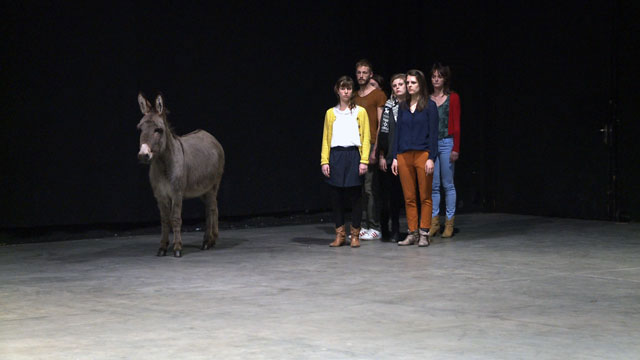

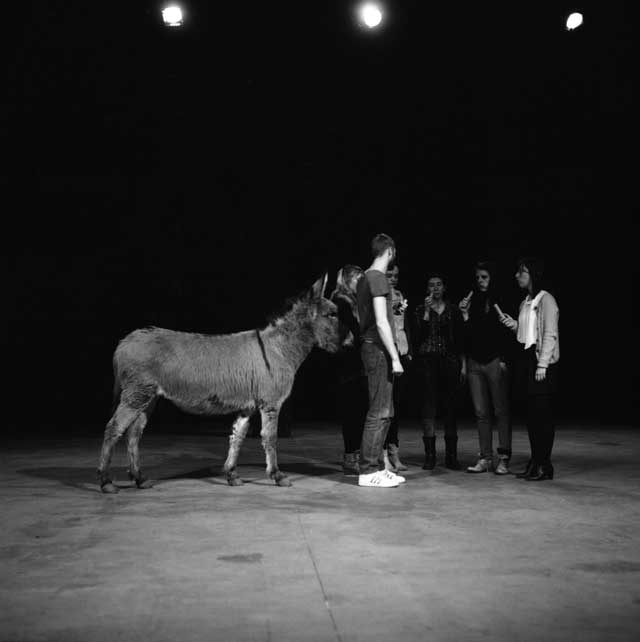

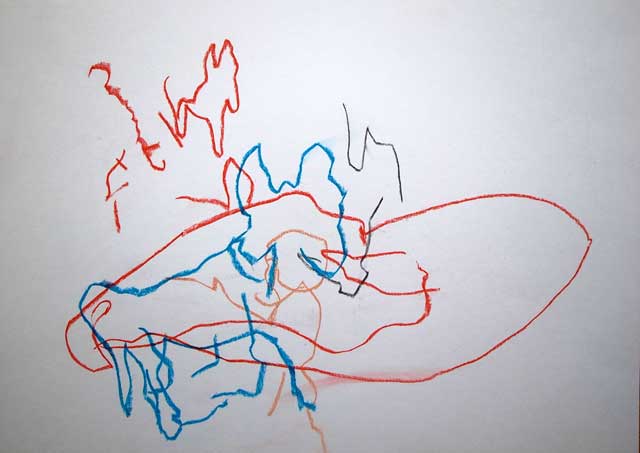
video stills, photographs and drawing from the performance Balthazar-1. stories by David Weber-Krebs and Maximilian Haas with Julie Delrue, Greet Jacobs, Linda Lugtenborg, Evelien van de Maele, Annemieke Ros and Sid van Oerle at Kaaitheater, Brussels, March 2013 BE
Balthazar (1. stories) Kaaitheater Brussels, March 2013
Stories try to grasp the animal and assign a stable meaning to him. But the animal undercuts constantly this attempt to define him and pulls the narrator and the narration into a process of becoming-animal. Together with students of the programs Rits (Drama) we explored the narrative definition of animals on a theater stage. Different stories were confronted with their living object, the donkey Balthazar, who embodied or belied them. The theater-performance was presented in the course of the festival Burning Ice #6 (Kaaitheater) on the 28th and 29 th of March 2013.
Balthazar (2. a choreography) Kampnagel Hamburg, June 2013
We live with animals and we work with them. And since we lack a common language it is up to the bodies to negotiate the shared world. And: What we are, is just what we have become while working with them. With students of the Inter-University Centre for Dance Berlin (HZT) we explore the conditions of living and working together with animals in choreographic practices. The dance-performance will be presented during the Live Art Festival (Zoo 3000, Kampnagel), on the 6th, 7th and 8th of June 2013.
Balthazar (3. voices) Amsterdam, 2014
Animals don’t have a language comparable to the human one, but they expel diverse noises. They produce all the time sounds, tones and signals, that could indicate joy, rage, pain or tranquility. How can you frame those expressions to perceive them as voices in the ordinary sense of usual communication? Or in the political sense of the articulation of demands? Or in the musical sense of a coherent sequence of sounds, that is either in harmony or dissonant with respect to other voices? And, taking those questions seriously: Can we still keep up with the straight borderline between humans and animals? With students of the programs Mime and SNDO at the Theaterschool Amsterdam we shall explore the musicality of the donkey Balthazar. The sound-performance will be presented in an Amsterdam Festival in 2014.

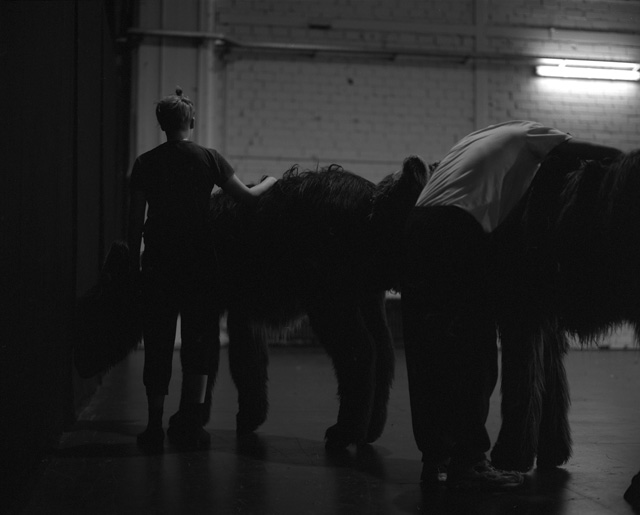
rehearsal of Balthazar-2. a choreography by David Weber-Krebs and Maximilian Haas with Tabea Magyar and Renen Itzhaki at Kampnagel Theatre, Hamburg, May 2013 DE / performances: 6th, 7th and 8th of June, see News
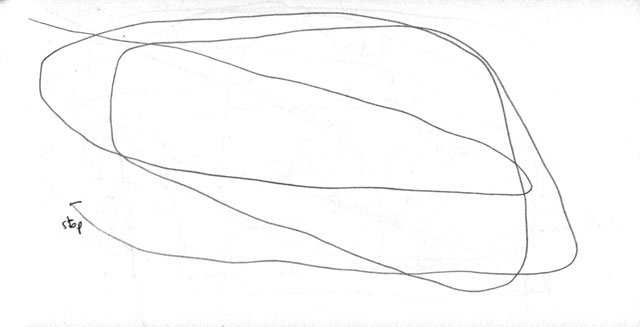
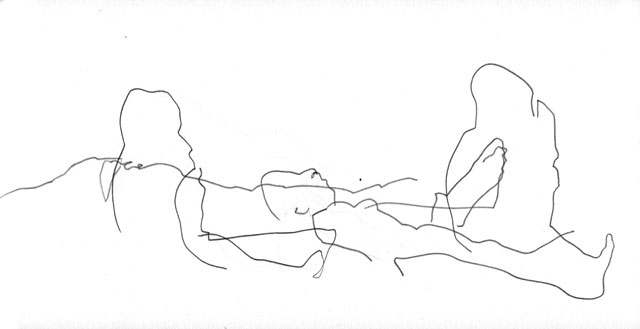
blind drawings made during rehearsals of Balthazar-2. a choreography by David Weber-Krebs and Maximilian Haas with Tabea Magyar and Renen Itzhaki at Kampnagel Theatre, Hamburg, May 2013 DE / performances: 6th, 7th and 8th of June, see News
The artist Ines Lechleitner takes part in the different project phases, observe the process and document it visually (photo, video, drawing). From the first encounter with the animal until the final performance every detail of the process – be it institutional, juridical, biological technical, social, emotional or artistic – is interesting in that regard. As in her previous art books Lechleitner will develop a specific method to represent and preserve the ephemeral situations of the development and presentation of the performance. Lechleitners work brings the complexity of the artistic experience with the philosophical notions in the publication. She captures the semiotic surplus that resists the theoretical argumentation and conveys sensual data as a framework for it. As this method extends the critique of philosophical concepts to a multiplicity of media it can be understood in terms of a theory expanded. Thus the publication brings together the different phases of the artistic research in both registers, theory and art.









